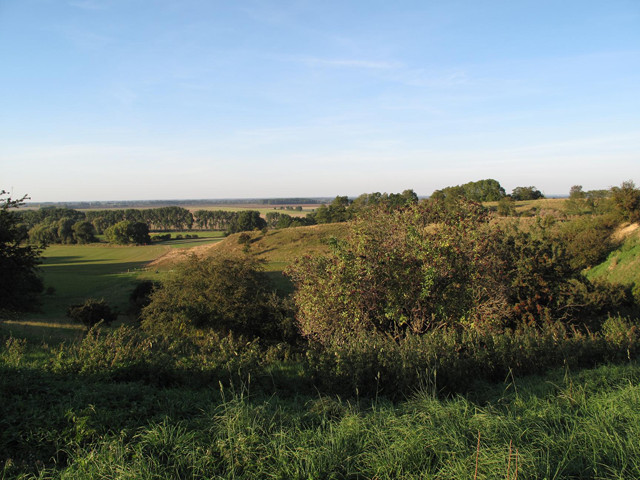
by Ward Chesworth Wednesday, December 7, 2016

"He was mastered by the sheer surging of life, the tidal wave of being, the perfect joy of each separate muscle, joint, and sinew in that it was everything that was not death, that it was aglow and rampant, expressing itself in movement, flying exultantly under the stars…" - Jack London
“He,” of course, is Buck the sled dog in “The Call of the Wild,” leading his team through the snows of a Yukon winter.
“Perfect misery” is what I associate with winter. Burst pipes or a frozen well are bad enough, but a backed-up septic tank is purgatory. Connected to your house by a pipe (unless you’re hooked into municipal sewage systems), the tank receives all the sewage that you flush its way. The solids settle out and the supernatant liquid (a euphemism for the pungent fluid remaining) flows into a leach field (a dysphemism for your garden’s subsoil). Where I live in Ontario, Canada, the leach field is less than a meter below the surface. During two separate Januarys in the last 40 years, temperatures consistently fell below minus 20 degrees Celsius and the soil froze solid. Drainage into the filter bed effectively stopped and sewage we had said goodbye to earlier returned, giving “home invasion” a new, noxious meaning.
Septic tanks have been around for millennia. In places with reasonable climates they work so well I’m amazed that the Great Cloaca, the putative septic tank of Ancient Rome, doesn’t appear with the Hanging Gardens of Babylon as one of the Wonders of the Ancient World. Nutrient-rich outflow from your tank feeds grass, flowers, veggies and weeds, and the remaining liquid filters down through overburden and bedrock to join the water table. Whenever you need a cup of tea, a bath or just another flush, you pump it back into your domestic plumbing and call it well-water. True, a few coliform bacteria may survive, but they are easily bumped off with a drop or two of Javex bleach. Personally, I omit this refinement on account of being averse to bleachy-tasting Earl Grey. But enough on winter’s woes, let’s get back to Buck and Jack London’s purple prose.
Could he really channel a dog’s feelings that well? No way, says Thomas Nagel, philosopher and author of the influential paper on consciousness, “What is it like to be a bat?” We can never know what another species thinks because we don’t have that species’ point of view, he argued. Cognitive scientist and philosopher Daniel Dennett disagreed, saying we can test many features of another species’ consciousness experimentally. Further, Dennett said, Nagel’s point is trivial: that we can’t imagine what it’s like to be another species because we are us.
I couldn’t give a rigorous definition of consciousness if you promised me a lifetime’s supply of pork rinds, so I’ll stay out of it. Although my geologist mind is now thinking … what’s it like to be a mountain? How do mountains think?
Weird as that last question sounds, “Thinking Like a Mountain” is a classic essay of 20th-century ecology by philosopher and conservationist Aldo Leopold. Aldo’s metaphor is a good one. He wants us to see a mountain as a total community of living and nonliving elements, a sort of living organism in its own right — in other words, an ecosystem. The metaphor was extended to the whole Earth in “Thinking Like a Planet: The Land Ethic and the Earth Ethic” by philosopher J. Baird Callicott. And now I’m wondering about landforms at lower elevations. What about “thinking like a lowland”?
For enlightenment, I turn to “The Conquest of Nature: Water, Landscape and the Making of Modern Germany” by David Blackbourn, in which the history and culture of modern Germany is brilliantly related to the management of water: drainage of wetlands, creation of polders, and canalization and control of rivers. In the mid-18th century, Frederick the Great’s engineers began draining the southern part of the Oderbruch swamp, east of Berlin, taking advantage of the northward slope of the land. By the 1730s, the area had become fertile and productive farmland, and drainage of the northern Oderbruch was underway. “Improvement” (the fashionable 18th-century word) was successful, though setbacks were common.
“Squeezed out of one place, the water only made its presence more powerfully felt elsewhere. Worse: when the river ran unusually high in the northern marshes, water backed up and inundated the newly won land to the south, as the catastrophic floods of 1736 were to show,” Blackbourn wrote.
When I read “backed up,” all was revealed: Driven by the conditions around them, the Oderbruch lowlands “think” like my septic tank.
© 2008-2021. All rights reserved. Any copying, redistribution or retransmission of any of the contents of this service without the expressed written permission of the American Geosciences Institute is expressly prohibited. Click here for all copyright requests.